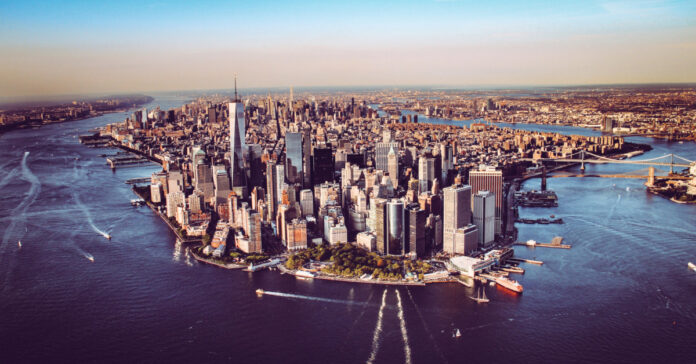I left New York City back in the early 1990s. As a recent college graduate, it was a fun place to live and work, but it was a terrible place to raise children and an even worse place to be a prepper.
In 2002, I visited Lower Manhattan and saw the remains of the World Trade Center. It was a somber moment as 9/11 was still fresh in everyone’s minds. There was no formal memorial yet, just a makeshift one with photos, notes, flowers and such on the fencing that surrounded the ruins. I believe that was the last time I was there, and I have no desire to go back.
These days, in our COVID Crisis, there is even less reason to go. Thankfully, my wife’s close friend and former colleague who used to live on Staten Island moved to Florida, so there’s no reason to go back to “the city.”
The Early Epicenter
When COVID-19 was first breaking out in the U.S., New York was its epicenter, the place with the most cases, the most crowded hospitals, and the most desperate people. You could say it was our Whuan. The rich left for the Hamptons or their second (or third) home somewhere else, and everyone else was stuck eating takeout while living in cramped apartments. (My apartment back in the day was 680 square feet, and they considered it a large one-bedroom.)
After getting the outbreak under control, it experienced a quiet summer and Los Angeles eclipsed it with a higher rate of infection. But now, New York and neighboring New Jersey look like they might experience a return to the bad old days thanks to the mutant COVID-19 strain we mentioned in yesterday’s COVID-19 report.
According to this article, CDC data showed the states with the highest average daily new COVID cases relative to population for the past 10 days are New York and New Jersey. Sound familiar?
Is NYC our Canary?
Last time around, meaning a year ago, New York’s spring coronavirus peak was followed by a summer outbreak in states like Florida and Texas. If NY and NJ’s cases surge, should we expect to see a similar but delayed surge other states? Or will the increase number of vaccinations prevent that from happening?
According to the New York Times, cases are rising in 22 states, with New Jersey in the lead. We may just have to cross our fingers or get a jab in our arms.
There have been 124 million doses of the vaccine dispense and 44 million people have received both shots. That means that about 13.5 percent of the population has gotten the full vaccine and another 11 percent should have at least partial immunity from one shot. Add the 30 million people who have tested positive with COVID-19 in the past year, and that means 58 percent of the population who should have some immunity.
Yet we are still getting between 40,000 and 60,000 new cases per day. I guess herd immunity is still a few months away, assuming that the current vaccines continue to be effective against emerging variations.
Variations and Mutations
When the virus mutates, it creates a new variation. All viruses mutate over time, but Coronaviruses are prone to mutation, which is why a new flu shot is available very year. The constant mutations make the flu shot far less effective than the 95 percent rate or protection you may have heard that some COVID-19 vaccines provide. But as the original virus mutates and new variations emerge and spread, even those 95% effective vaccines may be less and less effective.
The mainstream media seem to flip flop between panic-inducing bad news to reassuring feel-good pieces. Right now, there hasn’t been a great deal of coverage about the new B.1.526 variation, but here are some recent articles
- A new COVID-10 Variant is spreading at an alarming rate
- New variant contains a mutation thought to help the virus dodge the immune system
- Early studies suggest the mutation may evade antibody therapy
Don’t Get Caught by Surprise
My apologies for writing about the coronavirus two days in a row, but as preppers, we need to look ahead at what might happen so we can better prepare for it. If New York City is truly our canary in the COVID mine, then the time to stock up on toilet paper, canned soup, and everything else that the country ran out of during the last panic may be now.








